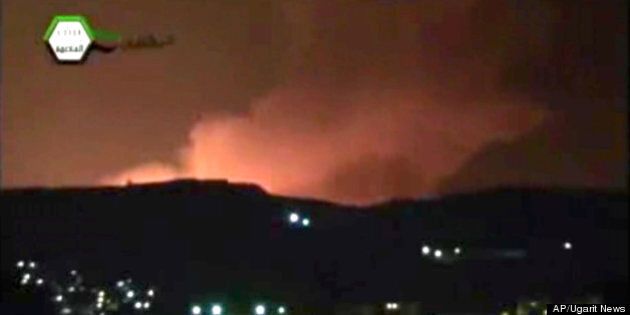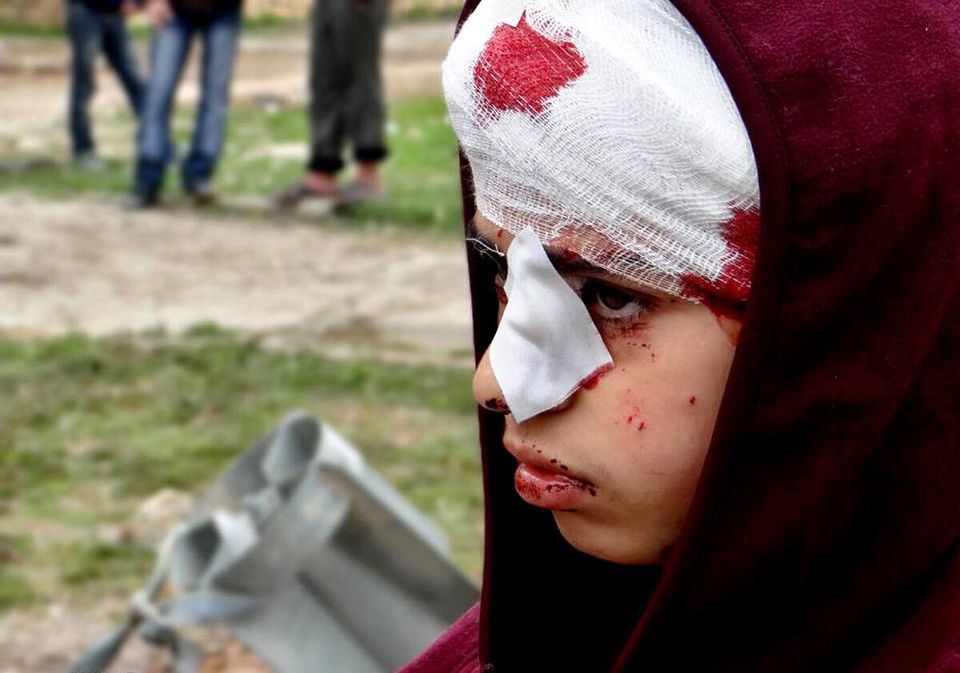
There will be no intervention in Syria until the crisis explodes. Sadly, the country is already imploding under the unbearable pressure of a civil war that has already cost over 70,000 lives, driven millions from their homes, and destroyed countless dollars worth of infrastructure. But Syrian President Bashar al-Assad will continue to deploy everything from airstrikes to "small-scale" chemical weapons against his own people with impunity until his atrocities spark a full-blow regional explosion.
Despite the mounting civilian casualties, western powers have proven unwilling to launch a full-scale military intervention. The reluctance to put troops on the ground for fear of ending up mired in another costly Mideast war is understandable, particularly on the part of the United States, just barely out of Afghanistan. Western powers also have understandable concerns about providing rebel forces with more powerful weaponry, such as surface-to-air missiles or SAMs -- namely that they could fall into the hands of extremists or their proxies, or be used to target commercial airliners and other civilian targets. These concerns drove the Israeli military's recent attack on a Syrian airport where SAMs intended for Hezbollah were allegedly being stored. The U.S. appears to be applying the hard-learned lesson of the Afghanistan intervention that arming indigenous fighters can lead to serious blowback. When Taliban fighters inherited many of the SAMs that the West had provided to the Mujahideen a decade earlier, their ability to counter U.S. attacks during the 2001 invasion and subsequent occupation increased significantly.
While it may make long-term strategic sense to deny heavy weaponry to the Syrian rebel forces, without SAMs, they are limited to what they manage to capture from Assad's army bases, which does not appear to be much, some reporting to the contrary notwithstanding. Lighter weapons are a poor substitute and regardless, they lack the caches that would be required to take down enough planes and helicopters to make a real dent in the Syrian air force. Hence the standstill in fighting: much of the rural countryside and key border crossings are firmly in rebel hands, but the Syrian government retains control of major city centres and therefore of the country proper. The rebels have not been able to advance beyond the suburbs of Damascus, Aleppo, Hama, and Homs, chiefly because the government strikes back -- without discriminating among rebel bases, hospitals, or breadlines -- from the sky.
The above situation has provoked calls for a 'limited' western air campaign to expedite the fall of the tyrannical Assad regime, or to capture chemical weapons stockpiles, both from outside and within western governments. But we shouldn't expect one any time soon, even if Syria's implosion worsens, because the word 'limited' is a misnomer -- ground troops and direct military involvement would also be required. Western governments know this, and don't want any part of it. They are aware that a successful intervention with minimal casualties is hardly guaranteed, and it will be costly, for the following reasons:
Firstly, any 'limited' air campaign against the Assad regime will require disabling the Syrian military's command structure, including targeting its key intelligence and communication headquarters. These command structures are centred in Damascus, and it is unlikely that they have moved because much of Assad's army remains focused on securing the capital. With a dense population of five million people, the human costs of targeting these centres could be high. After the command centres, even a 'limited' air campaign would require crippling the Syrian air force. The Syrian regime has approximately 15 military airports from which planes attacking rebels and civilians take off. One military airport in Taftanaz was recently overrun by the Islamist Al-Nusra Front and elements of the Free Syrian Army, but only after weeks of heavy fighting. The rest of the airports remain in Assad's hands, and that is where they are likely to stay if no outside support is forthcoming, especially as relative to Taftanaz, they are situated in or near more populated areas, making them more difficult to attack.
Secondly, even a 'limited' air campaign would not be without significant risks to intervening forces and civilians on the ground. Syria has an effective, integrated air defense system that includes strong radar technology, and it is under the control of a centralized intelligence and command structure that could sense and track any air offensive launched by foreign powers. Civilian casualties would be inevitable in the ensuing battle to control Syrian air space, and although no precise numbers are publicly available, the location of critical military and infrastructure targets suggest they would be high.
Finally, those weighing intervention see an international community that is unlikely to stand behind them or endorse their effort -- even a no-fly zone has proveN a no go -- and the resultant impossibility of replicating the overthrow of Gadhafi in Libya, the success of which was largely contingent on widespread support for the intervening coalition. Obstructionist behaviour on the part of the Russians at the UN Security Council is another apparently insurmountable obstacle, largely because President Obama has shown little interest in pressuring them to act otherwise. This is hardly surprising, as stalemate in the Security Council on Syria is an ideal political outcome for Obama. The president has no interest in adding another Middle East war to his portfolio, and knows that the U.S. would be hard-pressed to pay for one, given the unravelling domestic fiscal situation.
Syria today is Afghanistan circa 1998. We don't need a crystal ball to see how it will end up if left to its own fate. If, or rather when this war explodes and threatens the regional balance of power, the West will recalculate its current standing of staying on the sidelines. At this point, the risks and costs of direct military action have tipped the scales to favour a policy of standing idly by. But waiting until all of Syria's neighbours, allies, and enemies are sucked into the vortex will only drive the already high costs of intervention higher, and reduce the chances that any kind of international effort, 'limited' or otherwise, will halt the implosion.
This article first appeared on OpenCanada.org.
